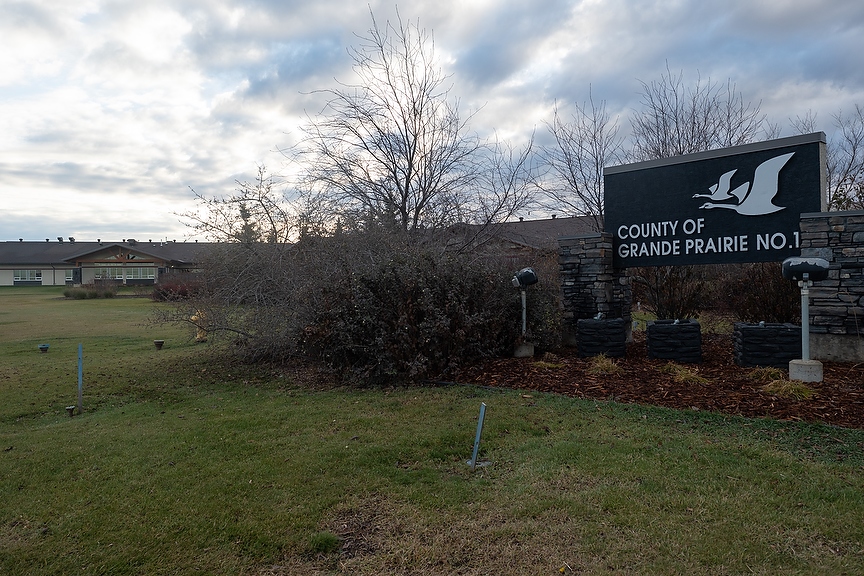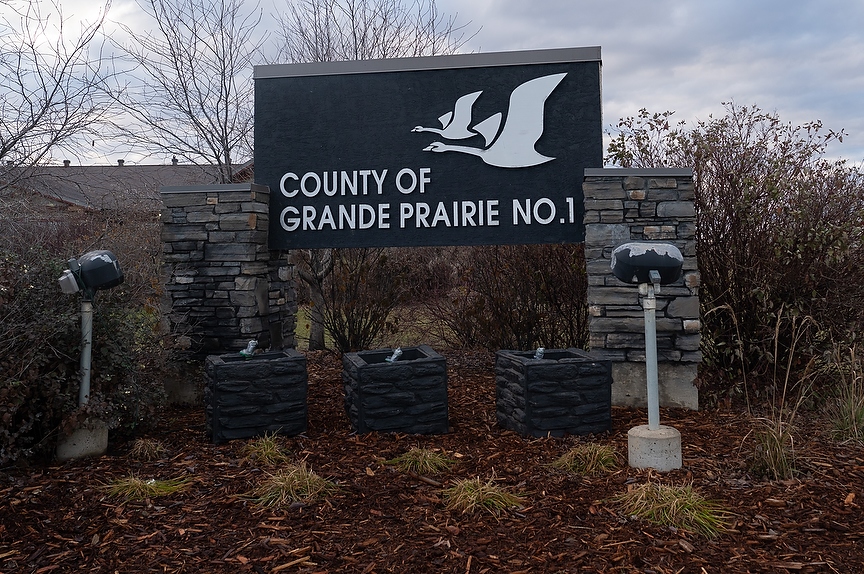
A report released last week by the Fraser Institute says the County of Grande Prairie spent $5,413 per person in 2023, the most compared to 25 other Alberta municipalities.
County of Grande Prairiemanager Joulia Whittleton said a significant expense in 2023 was incurred due to wildfires, including the Dunes West fire and the creation of a fire break south of the city.
“A portion of that, the cost in 2023, was obviously recouped later through the disaster recovery program for wildfire response,” said Whittleton.

“We do recognize we spend a lot of money on the roads and bridges maintenance, that's the top priority for the rate payers, so maintaining 3,600 kilometres of roads and bridges that we have is a lot.”
She also noted that the county contributes inter-municipal funds to help pay for services used by county residents in other municipalities, noting the county is one of the highest-paying contributors to an urban municipality.
The county was also ranked third for the amount of revenue per person it generated in 2023: $5,530.
The Fraser report says it can be difficult to compare municipal budgets as formats can differ, and the report looks to show the differences clearly.
The study selected municipalities with a population greater than 17,000 and excludes Medicine Hat because of “its unique status as the only Alberta municipality operating both an electricity and natural gas utility.”
“Some variation in municipal expenditure reflects differing local needs and service levels, but the wide disparity in per-person spending also raises important questions about the efficiency of municipal spending,” reads the report.
“Residents in high-spending municipalities — especially when comparing those jurisdictions to nearby and similarly sized municipalities — should consider whether they are receiving good value for their tax dollars.
“Likewise, in municipalities where spending growth consistently outpaces inflation and population growth, policymakers should carefully assess whether such growth is fiscally sustainable and how it affects taxpayers.”
Whittleton said urban components like Clairmont incur costs and the county also offers services that other municipalities do not, such as home care and a school liaison program.
She referred to the county’s 2023 Citizen Satisfaction Survey that stated that 96 per cent of residents rated the quality of life as good.
The survey found the top priorities of residents to be the fire department and road maintenance and upgrading.
She said agricultural producers are requiring wider roads as equipment sizes grow, and the county is responding to those needs.
The City of Grande Prairie is included in the Fraser report. At $3,342 per person, the city placed 10th for spending in 2023. The average among all included municipalities was $3,239.
The report reveals the percentage change in inflation per-person expenditure for the County of Grande Prairie to be the second highest at 43.9 per cent (from 2009 to 2023).
“On average, inflation-adjusted per-person spending increased by 12.9 per cent across the studied Albertan municipalities, rising from $3,001 in 2009 to $3,389 in 2023,” said the Fraser Institute.
The City of Grande Prairie’s change in expenditure is about 16.2 per cent from 2009 to 2023.
Five of the municipalities were able to reduce their inflation-adjusted per-person spending percentages between 2009 and 2023: Foothills County, Airdrie, Camrose, Cochrane and Chestermere.
Still, the report notes, “Municipal expenditure grew faster than population growth and inflation from 2009 to 2023 for 21 of the 26 municipalities in the study.”
Whittleton said it’s a good thing to have people looking into municipal financials and creating reports such as the Fraser Report, but she also suggested people look at reports from Municipal Affairs as well.
“We usually look at that data where we compare ourselves to other rural municipalities in Alberta of similar size and similar operations kind of nature, and that usually provides better information for us.”
She said county administration will compare figures such as mill rates and spending per kilometre on roads.
“That's a better indication for us, and just strictly dollar to capital and then compared to urban municipalities that have a different nature of services, and usually much higher population,” she said.